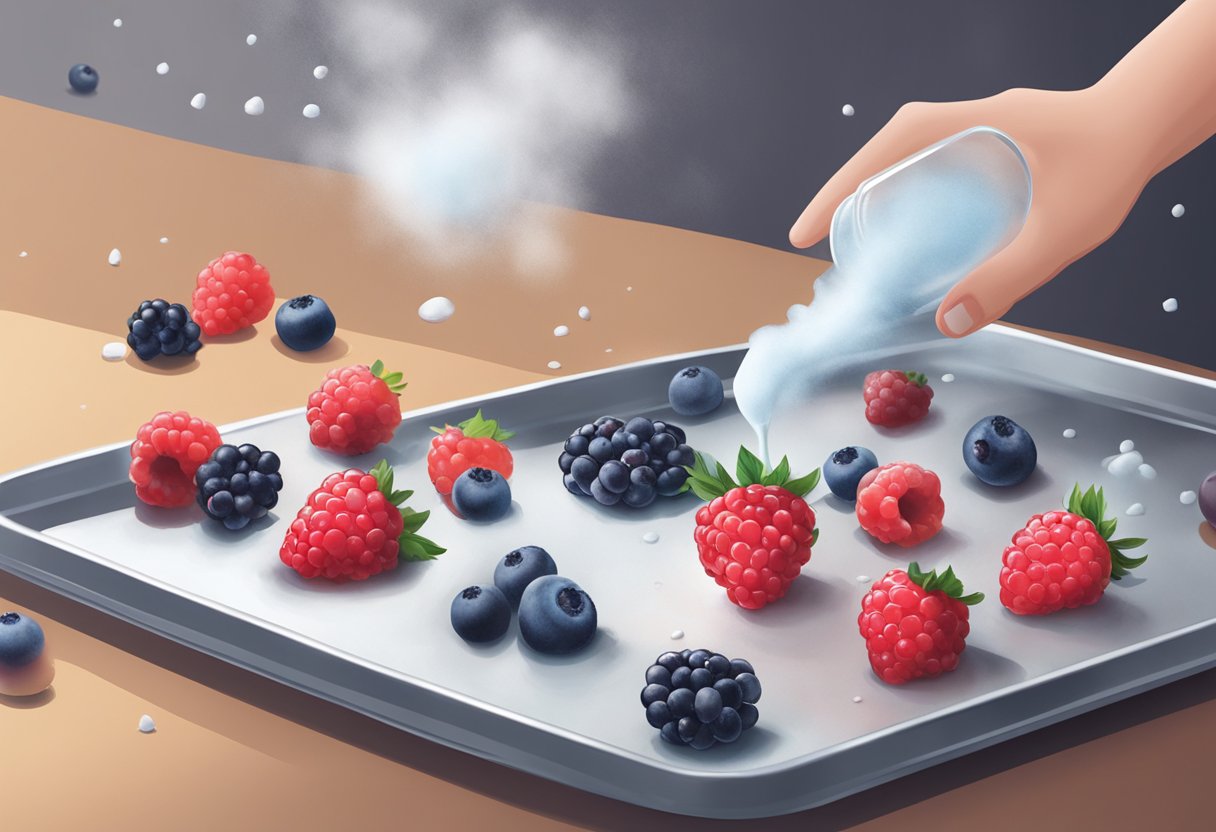Freezing berries is a great way to enjoy their fresh flavor all year round. Whether it’s strawberries, blueberries, raspberries, or any other type of berry, preserving their peak taste and beneficial nutrients can be effortlessly achieved through proper freezing techniques. After years of experimenting in my own kitchen, I’ve distilled the process into a few simple steps that ensure your frozen berries are as delicious as the day they were picked.

By freezing berries at their freshest, you can add an extra zing to your smoothies, baked goods, or breakfast bowls whenever the mood strikes. I’ve found that spreading unwashed berries on a baking sheet to freeze individually prevents them from clumping together, which makes it a lot easier to use them in recipes later on. Once they’re solidly frozen, I transfer them to airtight bags or containers, squeezing out excess air to avoid freezer burn.
The key to perfectly frozen berries lies in flash-freezing them individually on a baking sheet, then storing them in airtight containers with minimal air to maintain their quality.
JUMP TO TOPIC
Step-by-Step Guide to Freezing Berries
Preserving the fresh flavor and nutritional value of berries is straightforward with proper freezing techniques. The process involves washing, drying, and packing the berries effectively to prevent freezer burn and maintain texture.
Preparing Berries for Freezing
Before freezing, I ensure my berries are washed and thoroughly dried. Any moisture can cause freezer burn or clumping. Here are the steps I follow:
2. Hull and Pick Over: I remove the stems and hull of strawberries. I also pick over all berries, discarding any damaged or overripe ones.
3. Dry: I lay the berries out on a clean kitchen towel, allowing them to air dry completely. This may take up to a couple of hours.
Packaging and Storing Berries in the Freezer
The correct packaging is crucial for keeping berries fresh in the freezer. I use the following method to store them:
💥 Single layer freezing: I spread the berries in a single layer on a rimmed baking sheet lined with parchment paper, ensuring they don’t touch to prevent sticking. After freezing them until solid, usually for a few hours, I transfer the berries into freezer-safe containers or plastic bags, removing as much air as possible.
Packaging options I use include:
- Freezer bags: Perfect for handling and space-saving in the freezer.
- Glass containers: Reusable and stable, great for long-term storage.
I label each package with the date of freezing to keep track of freshness.
Techniques for Preventing Freezer Burn
Freezer burn is the enemy of frozen berries. To avoid this, I embrace these practices to preserve texture and flavor:
2. Airtight packaging: Whether using bags or containers, I press out as much air as possible, as air can dehydrate the berries and cause freezer burn.
3. Consistent freezer temperature: I keep my freezer at a constant temperature to prevent the temperature fluctuations that can cause freezer burn.
Using Frozen Berries in Culinary Creations
Frozen berries are versatile ingredients that can transform a wide range of dishes. These fruits can be integrated into both sweet and savory applications without the need for thawing and offer a burst of flavor and color.
Incorporating Frozen Berries in Baking
When I use frozen berries in baking, the aim is to ensure they don’t turn the batter soggy. Here’s a brief guide on how to include them in your baked goods:
To avoid a mushy texture in baked goods, gently fold frozen berries into the batter just before baking.
- Use frozen berries directly from the freezer.
- Toss them with flour to prevent bleeding.
- Be gentle when folding them into the batter.
- Adjust baking times as frozen berries may require longer in the oven.
For pie fillings and cobblers, I often add an additional thickening agent, like cornstarch, to account for extra moisture from the berries.
Creating Delicious Sauces and Jams
Frozen berries make excellent sauces and jams with deep, concentrated flavors. The process I follow is straightforward:
Jams: Cook with sugar and pectin, and make sure to skim off any foam.
When I prepare sauces, they can be used over desserts, mixed into oatmeal, or even incorporated into savory dishes for a sweet and tart component. For jams or jellies, patiently cooking the fruit down ensures a perfect texture that can be spread on toast or added to yogurt.
I believe the key is to taste and adjust. Depending on the natural sweetness of the berries, the amount of added sugar can vary.
Maintaining Quality and Freshness of Berries
Ensuring berries remain fresh and retain their quality during freezing involves proper pre-freezing preparation and controlled thawing.
Freezing berries is a great way to extend their shelf life, but the key is to do so without compromising their freshness and quality. I begin by selecting only the best quality berries — firm, ripe ones without any bruises or signs of mold. I wash them gently to prevent any damage and remove stems, leaves, or any lingering dirt. It’s important to thoroughly dry the berries since any excess moisture can lead to ice crystals, affecting texture and flavor.
🌟 Optimal Freezing Technique
I then spread the clean berries in a single layer on a baking sheet — this prevents them from sticking together and allows for individual freezing. Once they’re solidly frozen, I transfer them to air-tight freezer bags, pressing out as much air as possible before sealing.
Long-term storage in the freezer can last months, but it’s crucial to maintain a stable temperature. Freezer fluctuations can cause freeze-thaw cycles that degrade berry quality. When it comes time to thaw them, I prefer doing so gradually in the refrigerator to preserve texture and avoid sogginess, keeping them in their original packaging to reduce exposure to air and potential moisture.
Never refreeze berries once they’ve been thawed, as this can considerably diminish their taste and texture.












